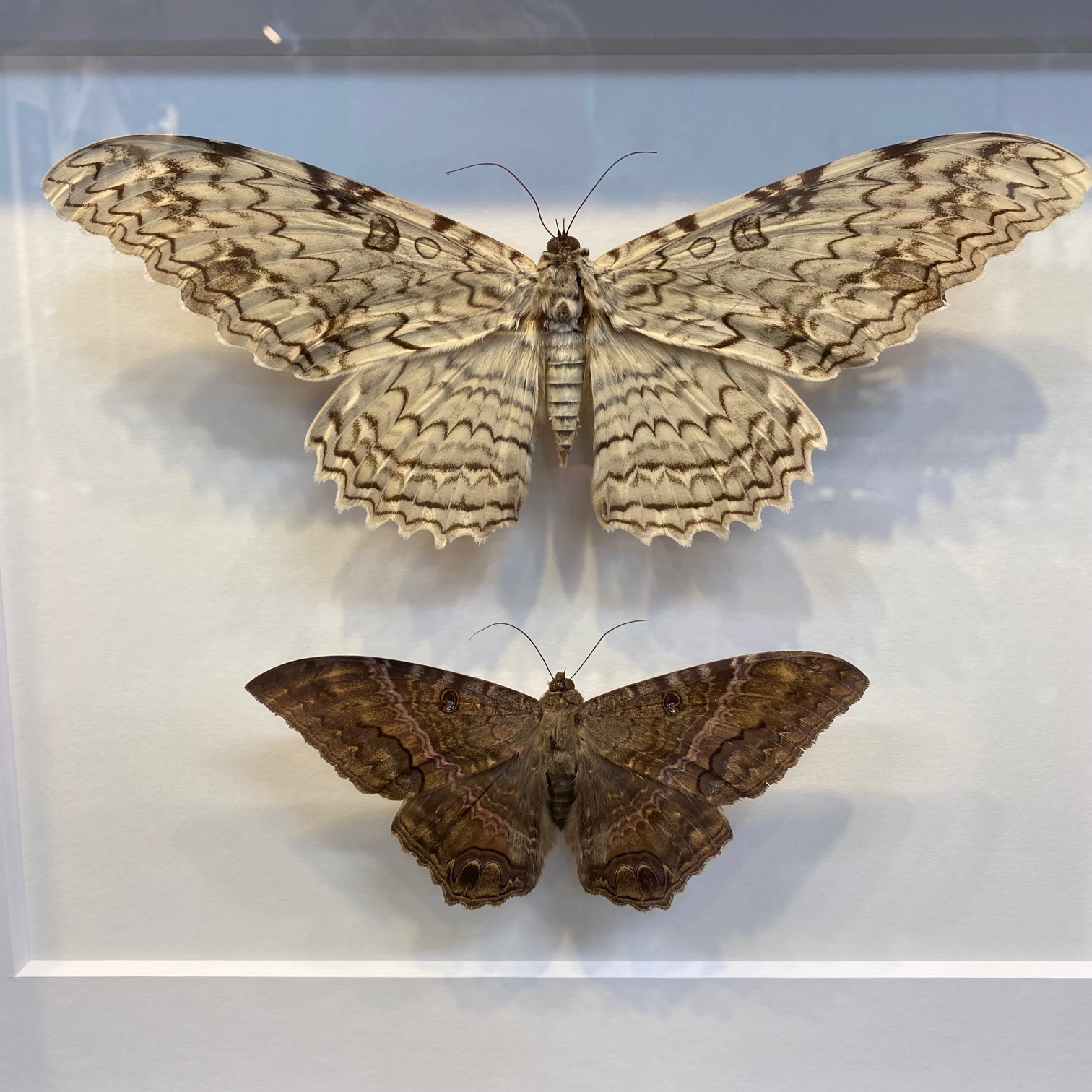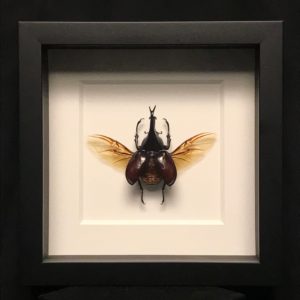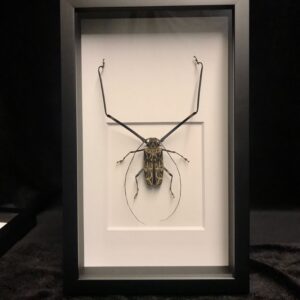Description
White and Black Moth Frame, Thysania agrippina and Ascalapha odorata. Thysania agrippina, the White Witch Moth comes from Peru, and Ascalapha odorata, the Black Witch Moth comes from Mexico.
You will receive this frame or one like it. The frame shown is 18 1/4″ x 14″ x 2″.
The White Witch Moth (scientific name Thysania agrippina) is one of the largest moth species in the world. Known for its striking appearance and impressive size, this moth is native to the tropical and subtropical regions of the Americas, particularly found in places like Mexico, Central America, and parts of South America.
Key Characteristics:
- Wingspan: The White Witch Moth has a wingspan of around 10 to 12 inches (25 to 30 cm), with some exceptional individuals reaching up to 14 inches (36 cm).
- Coloration: The moth’s forewings are pale, almost white, with some dark markings and streaks, while the hindwings are typically lighter, making it look elegant and ghostly.
- Flight: Despite its enormous size, the moth is a slow and somewhat clumsy flier, which adds to its mysterious aura.
Interesting Facts:
- Rare sightings: Because of its nocturnal behavior and habitat preferences, the White Witch Moth is rarely seen by the general public.
- Cultural significance: Due to its size and dramatic appearance, this moth has captured the imagination of various cultures, often associated with the supernatural or the mythical.
The White Witch Moth is truly a marvel of nature due to its grandeur and beauty.
Ascalapha odorata, commonly known as the Black Witch moth, is a large species of moth in the family Noctuidae. Here’s some key information about it:
- Size: This moth is a large species of moth, with a wingspan that can reach up to 6 inches (15 cm).
- Appearance: It has a striking appearance, with dark brown or black wings, often with a mix of lighter markings, including a characteristic white band or crescent near the tips. The wings can also have patterns resembling eyespots, contributing to its intimidating look.
- Habitat: The Black Witch moth is found primarily in Central and South America, although it is occasionally spotted in the southern United States, particularly during migration periods. They are typically found in tropical and subtropical forests.
- Behavior: The moth is nocturnal, flying primarily at night, and is attracted to lights. It has a strong, rapid flight and is capable of covering long distances.
- Life Cycle: The larvae of the Black Witch moth feed on a variety of plants, including those in the cashew and sumac families. Like other moths, it undergoes a complete metamorphosis, with the egg hatching into a caterpillar, then pupating, and emerging as an adult moth.
- Cultural Significance: In some cultures, the Black Witch moth is considered a symbol of bad luck or death, likely due to its large, intimidating appearance and its tendency to appear unexpectedly. However, in other cultures, it can be seen as a symbol of transformation or mystery.
- Ecological Role: As with other moths, Ascalapha odorata plays a role in pollination, though it is more commonly known for its role in the food chain, serving as a prey species for various predators.
If you’d like to know more or have specific questions about this moth, feel free to ask!























